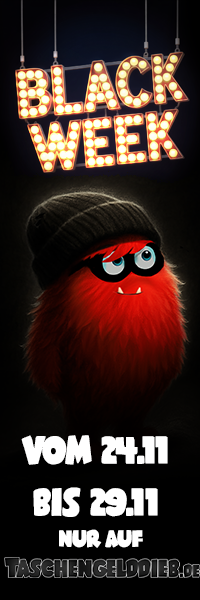Star Wars Armada: Taktikartikel
Fantasy Flight Games haben einen Taktikartikel zu Star Wars Armada vorgestellt.
„The shield must be deactivated if any attack is to be attempted. Once the shield is down, our cruisers will create a perimeter, while the fighters fly into the superstructure and attempt to knock out the main reactor.“
–Admiral AckbarAt Gen Con Indy, fans of Star Wars™: Armada will have their chance to participate in the game’s first Championship-level event, the North American Championship Tournament. What will participating fleet admirals need to know in order to emerge victorious from their engagements? What will they need to continue practicing in order to win their battles at the World Championships in November? The game’s developers have decided to address these questions in a series of strategy articles intended to rush commanders straight out of the Academy to battle readiness and to help veterans focus on the basics.
Last week, developer Sam Stewart reminded us that the game is about more than its explosive volleys of cannons, missiles, and torpedoes; it’s about scoring the most victory points over six rounds, and that means you need always to keep at least one eye toward your objectives. This week, producer Michael Gernes explores one of the game’s most critical skills – maneuvering your ships.
Producer Michael Gernes on Maneuvering into Attack Position
Maneuvering your ships in Star Wars: Armada takes skill. Arguably, it is the most critical skill to practice. Mastering the maneuver system is necessary to play the game at its deeper levels. Learning how to outmaneuver your opponent doesn’t guarantee you a win, but it can help you turn a mismatch into an upset, or turn the tables back in your favor after a momentary setback.
The importance of your maneuvers will probably become obvious as soon as you finish playing your first games. You may see how the strengths of your ships and upgrades are diminished if you can’t get them into attack position, and you may also see how quickly a battle can turn if you manage to trap your opponent’s ship in range of all your biggest guns.
Maneuvering your ships is a learned skill, and there’s no substitute for practice. Playing the game and maneuvering your ships time and again is the best way to develop your skills to the point where you don’t have to actively think about them. However, there are some general practices and techniques that can help you to more quickly gain mastery.
Develop Your Battle Plan
First, you need to have a general plan at the start of each game for how each ship and your overall fleet will move throughout the battle. For example, if you’re playing a Rebel fleet composed of an Assault Frigate Mark II A and two Nebulon-B Escort Frigates , you could plan to sail your assault frigate up the left side of the board at speed three, turning around the enemy rear by mid-game while your Nebulon-B frigates move slowly up on your right, turning one click to the left each round to keep their front arcs on the Star Destroyers.
Of course, you should adjust your battle plan for several factors, including your ships‘ capabilities, the chosen objective card, the placement of obstacles, and the composition of the enemy fleet. You also need to deploy your ships and set their initial speeds to fit with your plan. Armada may allow players to make free use of the maneuver tool, but it can be very difficult to overcome an initial setup that leaves your ships out of position. You will find it hard to maximize your firepower or score on the game’s objective if you’re forced to plan
commands just to avoid overlapping obstacles or drifting into your opponent’s best firing arcs.
As an extension of this concept, you want to anticipate how your opponent will maneuver throughout the game. This will change depending on the aforementioned factors. For example, if your opponent is the second player in a game using Contested Outpost , and brings a fleet based around two Victory II-class Star Destroyers , you can expect a creeping, defensive posture centered around the station.
You’ll want to make your plans accordingly and set up your ships‘ approaches based on where you expect the enemy fleet to be at each stage of the game.If you plan your approach well, you won’t need to choose
each round, or dread the fact that your high command value might delay your ability to adjust your course. Instead, you’ll have a feel for planning just the right command at the right time, and maximize the effectiveness of the
commands you plot. In this case, saving a
token on round one may give you all the flexibility you need to accomplish your goals.Get to Know Your Ships
When you set your course, you want to pay attention to each of your ships‘ yaw values, especially when you resolve the
command. It’s obvious that better yaw on a joint means better turning capability, but at speeds two through four, it also pays to observe how the yaw values at adjacent joints can build on each other when the extra yaw from the
command is applied. For example, a Nebulon-B frigate traveling at speed three can make a different 90-degree left turn depending on whether it uses its extra click at the first or second joint. Putting that extra click at the second joint allows the ship to travel father before making a hook turn at the end of a straighter course. Putting the extra click at the first join allows the ship to make a tighter left turn, gaining a more lateral movement.
The variation between the two courses is relatively minor but can make the difference between getting caught in a Star Destroyer’s front arc or surviving another round.
Becoming familiar with your ships‘ yaw values to this level also helps you to get maximum advantage out of any upgrade cards that affect your maneuvering. For example, Support Team cards like Engine Techs and Nav Team can both be used to get extra turning ability, but some ships can use them more effectively than others. Engine Techs is better placed on a Gladiator-class Star Destroyer to take advantage of that ship’s „II“ yaw value at speed one. Nav Team can help a Nebulon-B frigate execute a dramatically sharper turn when it resolves a well-planned
command using both the dial and a command token.
It’s a Trap!
Finally, if you can help it, you don’t want to be completely predictable. Much of Armada lies in anticipating your opponent’s plans and then altering yours to set the trap, instead of falling into it.
It’s generally good to point your ships at the enemy and hold to your plan. Still, every game has certain decision points where a ship can make a tactical change to its speed or course that can shape the rest of the game. For example, a fleet with several Nebulon-B frigates could begin its game by creeping toward the enemy fleet at speed one, focusing its attacks on one enemy ship. Then, on the third round, those frigates could each reveal
and spend a saved token to accelerate to speed three, with a plan to speed past the damaged enemy ship, destroy it with rear arc shots and turn to score on the station objective on rounds four and five.
Learning how to plan dynamic maneuvers several rounds in advance can leave your opponent guessing as to your real plan, and leave you with room to spring a surprise that will score you enough points to win.
In the end, the more of these principles you can apply to your Armada matches, the more you’ll have mastered one of the game’s fundamental skills, and the better you’ll be able to position yourself for success.
X-Wing ist unter anderem bei unserem Partner Fantasy Warehouse erhältlich.
Der deutschen Vertrieb der Fantasy Flight Produkte liegt bei Heidelberger.
Link: Fantasy Flight Games












Interessanter Artikel, der aber leider den Fakt von Armada außer acht lässt, dass man erst schießt und sich dann bewegt. Dass heißt, dass man auf jeden Fall bei der Bewegung mit mit einplanen sollte, wo sich der Gegner bei der Feuerphase in der nächsten Runde befindet, sofern er sich diese Runde noch nicht bewegt hat.
Natürlich hängt das auch von einigen Faktoren ab. Falls ich der erste Spieler bin, also immer die erste Aktivierung in einer Runde habe und sich mein bevorzugtes Ziel schon bewegt hat kann ich natürlich mein Dickschiff in eine gute Position beringen. Nächste Runde aktiviere ich ja definitiv als erster und werde natürlich das Dickschiff als erstes aktivieren, feuern und dann so gut es geht aus den besten gegnerischen Feuerwinkeln verschwinden. Dabei sollte natürlich weiterhin überlegt werden, dass ich auch in einer weitere Runde noch lohnenswerte Ziele habe.
Also definitiv ist die Bewegung in Armada der Aspekt des Spiels, der über einen Sieg entscheidet – und nicht so sehr die Feuerphase.